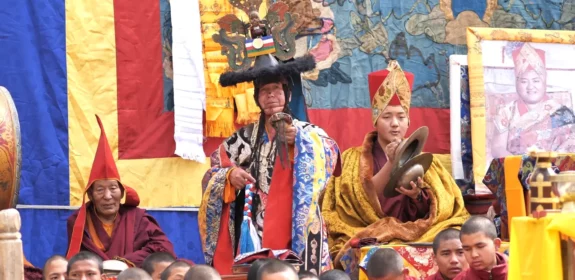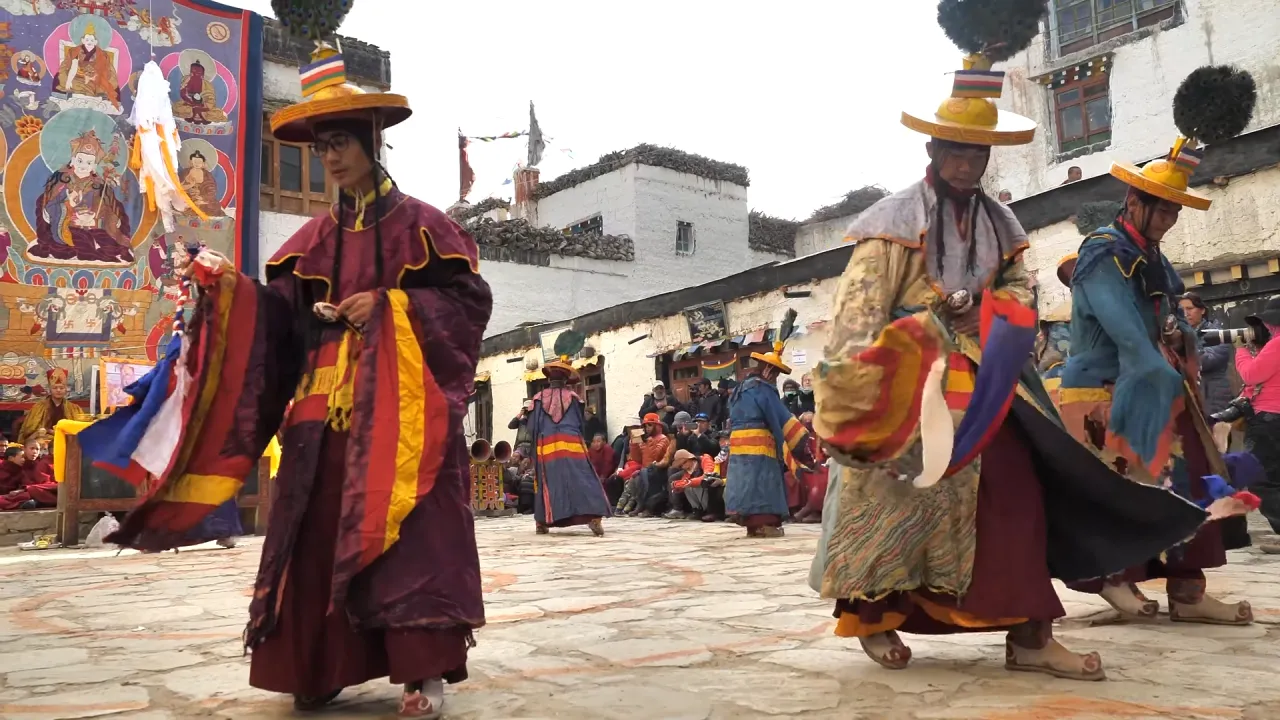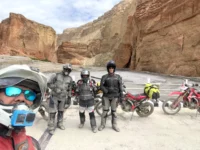Introduction: A Watershed Moment in the Himalayas
In a decision poised to reshape the landscape of high-altitude tourism, the Government of Nepal has announced a fundamental change to the fee structure for foreign trekkers visiting the iconic, restricted region of Upper Mustang. This move, ratified during a Cabinet meeting and communicated by government spokesperson Jagadish Kharel, signifies more than just a fiscal adjustment; it represents a strategic pivot in Nepal’s approach to managing its most fragile and coveted trekking destinations. The shift from a rigid flat fee of $500 per person for a 10-day period to a more flexible $50 per person per day model marks the culmination of decades of advocacy from the trekking industry and a bold experiment in sustainable tourism economics.
This report will delve into the multifaceted dimensions of this policy change. We will explore the historical context that led to the creation of “restricted areas,” conduct a granular economic analysis of the new fee structure, examine the ecological and cultural imperatives of the Mustang region, and situate this decision within the broader global trends of post-pandemic travel recovery and the growing demand for exclusive experiential tourism. Furthermore, we will analyze the persistent regulatory hurdles, the potential for digital transformation in permit issuance, and the future trajectory of tourism liberalization in other restricted zones like Upper Dolpa and Humla. This comprehensive review aims to provide stakeholders—from policymakers and trekking agencies to potential tourists and local communities—with a clear understanding of the opportunities and challenges that lie ahead in the new era of Nepalese trekking.
The Historical Tapestry – From “Forbidden Kingdom” to Restricted Area
To appreciate the significance of this policy change, one must first understand the unique history of Upper Mustang and the geopolitical rationale behind Nepal’s restricted areas.
The Ancient Kingdom of Lo
Upper Mustang, traditionally known as the Kingdom of Lo, is a high-altitude desert region nestled in the rain shadow of the Annapurna and Dhaulagiri massifs. Its history is deeply intertwined with Tibet, evident in its language, religion, and culture. For centuries, it was a crucial conduit for trade caravans transporting salt, grain, and wool between Tibet and the lower Himalayan kingdoms. This isolation preserved a pristine form of Tibetan Buddhism, with ancient monasteries, cave dwellings, and a unique royal lineage that endured until Nepal’s transition to a republic in 2008. This very isolation earned it the moniker “the Forbidden Kingdom,” a branding that now forms the cornerstone of its tourism appeal.

The Geopolitical Genesis of Restricted Areas (1970s)
The formal “restriction” on Upper Mustang and other northern districts was not born from tourism strategy but from Cold War-era geopolitical strife. In the 1960s and 1970s, the presence of Tibetan Khampa rebels, who opposed Chinese rule and used the porous Nepal-Tibet border as a sanctuary and staging ground for raids, became a major diplomatic crisis for Nepal. Caught between two giants, India and China, the Nepali government acted to assert its sovereignty and maintain regional stability.
In 1974, the Nepali Army successfully disarmed the Khampa rebels. However, the travel restrictions imposed on a swath of border districts—including Mustang, Manang, Dolpa, Humla, and Mugu—remained in place. The initial security concern gradually evolved into a mechanism for controlled access, ostensibly to:
-
Protect Fragile Ecosystems: These are among the most vulnerable and arid regions in Nepal, with limited capacity to handle large-scale waste and resource consumption.
-
Preserve Indigenous Cultures: The government argued that uncontrolled foreign influence could erode unique Tibetan Buddhist cultures and traditions.
-
Monitor and Control Movement: Maintaining a record of all foreigners in sensitive border areas remained a priority for national security.
The Official Dawn of Trekking Tourism
The history of modern trekking in Nepal is often traced to 1949, when the country ended its centuries-long period of isolation. British diplomat and mountaineer Lieutenant Colonel James Owen Merion Roberts is credited with organizing the first commercial trek in 1950, laying the foundation for an industry that would become a pillar of the national economy. As trekking grew in popularity through the latter half of the 20th century, the “restricted areas” remained tantalizingly off-limits, their mystique only growing over time. The government began issuing special permits through a tightly controlled system, creating a niche, high-value segment within the broader tourism market.
Deconstructing the Policy Shift – Economic and Strategic Rationale
The Cabinet’s decision is a calculated response to a complex set of economic pressures and strategic opportunities. It is a move that aligns with global travel trends 2024 and search behaviors like “sustainable luxury trekking” and “exclusive Himalayan journeys.”
Granular Economic Analysis: Old Model vs. New Model
The previous $500 flat fee was a significant barrier to entry. Its economic implications were clear:
-
Inequity for Short-Duration Trekkers: A trekker interested in a 5-day flying trek to Lo Manthang, the capital of Upper Mustang, had to pay the same $500 as someone on a full 15-day expedition. This resulted in an effective cost of $100 per day for the short-term trekker versus $33 per day for the long-term one. This discouraged shorter, potentially more frequent visits.
-
Disincentive for Diversification: The high upfront cost made it difficult for trekking agencies to market Upper Mustang as part of a broader “Nepal highlights” tour that included, for instance, Pokhara and Chitwan. Tourists were forced to choose.
The new $50 per day model introduces dynamic pricing and flexibility:
-
Cost-Benefit for Different Trekker Profiles:
-
Short-Trip Trekker (5-7 days): The biggest winners. A 7-day permit now costs $350, a saving of $150, making the trip instantly more attractive and competitive.
-
Standard Trekker (10 days): Cost-neutral at $500. No financial disadvantage.
-
Long-Haul Trekker (15+ days): Now faces a higher cost. A 15-day permit jumps from $750 ($500 for the first 10 days + $250 for the next 5) under the old system to $750 under the new. Any trip longer than 15 days becomes more expensive, potentially discouraging overly long stays and their associated environmental impact.
-
-
Revenue Maximization Theory: The government is betting that the increased volume of trekkers, particularly those opting for shorter trips, will compensate for and potentially exceed the revenue lost from the reduced per-trip fee from shorter journeys. This is a classic volume-over-margin strategy, common in industries trying to stimulate demand.
The Upper Mustang Trek is a journey into one of the most serene and culturally rich regions of Nepal. This […]17 DaysModerate - Aligning with Post-Pandemic Travel Trends
The “revenge travel” and “transformative travel” trends that emerged post-COVID-19 have reshaped tourist preferences. Today’s travelers, especially the high-net-worth individuals that Upper Mustang attracts, seek:
-
Flexibility and Shorter Itineraries: Uncertainty has made long-term planning difficult. The ability to book a shorter, high-impact trip is a major advantage.
-
Exclusivity and Safety: The “restricted” tag, coupled with the mandatory guide, inherently promises an uncrowded and managed experience, which aligns perfectly with post-pandemic safety and exclusivity concerns.
-
Meaningful Experiences: Travelers are increasingly seeking culturally immersive and environmentally conscious trips. The new pricing can be framed as part of a more thoughtful, accessible, and less extractive model.
Strategic Industry Stimulus
The Trekking Agencies Association of Nepal (TAAN) has been a vocal proponent of this change. For them, it’s a lifeline. By lowering the financial barrier for a flagship product like Upper Mustang, the government is directly injecting vitality into a sector that supports thousands of jobs—from guides and porters to hotel owners and suppliers in Kathmandu and Pokhara. This decision acts as a stimulus package for the entire trekking ecosystem, encouraging agencies to innovate new itineraries and marketing campaigns centered on the new affordability of a “premium” destination.
The Mustang Microcosm – Ecology, Culture, and Carrying Capacity
The liberalization of fees cannot be discussed in a vacuum. Upper Mustang is an incredibly fragile environment, and the fear of “overtourism” is a legitimate concern, as rightly pointed out by TAAN President Sagar Pandey.
The Fragile Ecosystem of the Trans-Himalayan Desert
Upper Mustang receives minimal annual rainfall. Its ecosystem is slow to regenerate. Key concerns include:
-
Water Scarcity: The entire region depends on glacial melt and a limited number of springs. An influx of tourists places immense pressure on local water resources for drinking, bathing, and cooking.
-
Waste Management: The arid climate means waste decomposes very slowly. The challenge of managing plastic bottles, packaging, and human waste is monumental. Unlike the Everest region, there are no reliable mechanisms for hauling trash out by helicopter or yak.
-
Soil Erosion: The sparse vegetation is easily damaged by off-trail hiking and the establishment of new campsites, leading to irreversible soil erosion.
The Preservation of a Living Culture
The culture of Upper Mustang is a primary attraction. The ancient walled city of Lo Manthang, with its medieval mud-brick structures and monasteries like Thubchen and Luri Gompa are priceless heritage site.
-
Cultural Commodification: An increase in tourist numbers risks turning sacred cultural practices and sites into mere photo opportunities, diluting their spiritual significance.
-
Socio-Economic Disparity: While tourism brings money, it can also inflate local prices for basic goods, creating a divide between those who benefit from the industry and those who do not.
-
Architectural Integrity: The traditional Tibetan architecture is vulnerable. Increased demand for lodging could lead to the construction of modern, incongruous buildings that破坏 the visual and cultural landscape.
The Concept of Carrying Capacity
The new policy makes the calculation of Upper Mustang’s “carrying capacity” more critical than ever. Carrying capacity is not just a number of tourists, but a complex measure of:
-
Physical Capacity: The number of available hotel beds and campsites.
-
Ecological Capacity: The point at which environmental degradation begins.
-
Social Capacity: The level of tourist influx beyond which the host community’s quality of life and cultural integrity are negatively impacted.
The government, in partnership with local communities and experts, must urgently define and enforce these limits. Tools like “digital permits with daily caps” linked to a real-time monitoring system could be a technological solution to prevent overcrowding.
Tiji Festival
The Unfinished Agenda – Remaining Regulatory Hurdles and Industry Demands
While the fee change is a monumental step, TAAN has been quick to highlight that the job is not finished. The current regulatory framework still contains archaic provisions that hinder market growth.
The Archaic “Minimum Two Trekkers” Rule
This is arguably the next big frontier for reform. The rule that requires a foreign trekker to be part of a group of at least two people to obtain a restricted area permit is a significant obstacle.
-
TAAN’s Argument: As President Pandey stated, “Why isn’t a single foreign trekker allowed…? There is no logic.” His argument is potent: since every trekker in a restricted area must be accompanied by a government-licensed guide, the security and monitoring rationale for the “two-person” rule is negated. The guide ensures the trekker does not wander off or engage in prohibited activities.
-
The “Solo Trekker” Market: This rule effectively shuts out the growing market of solo travelers, a demographic that is a major driver of tourism in destinations worldwide. These travelers often have higher disposable income and seek flexible, personalized experiences. Allowing solo trekkers (with a mandatory guide) would instantly double the potential market for Upper Mustang and other restricted areas without increasing the physical number of people on the trail proportionally.
-
Economic Inefficiency: It forces trekking agencies to turn away business or engage in complex “matchmaking” to pair solo travelers, an inefficient and often unsuccessful process.
The Call for Broader Liberalization
Upper Mustang is being used as a test case. TAAN has explicitly called for a similar review of fees and rules in other restricted areas, with Upper Dolpa being the prime candidate.
-
Upper Dolpa: Currently shares the old Mustang fee structure ($500/10 days). Dolpa, home to the stunning Phoksundo Lake and the ancient Shey Gompa, is even more remote and expensive to access. A per-day fee model could make shorter Dolpa circuits a viable product.
-
Humla (The Simikot to Kailash Route): While the permit for Humla itself is cheaper ($50/week), the journey is often the first step for pilgrims heading to Mount Kailash in Tibet. Easing restrictions and promoting Humla as a standalone destination could capture a segment of the spiritual tourism market.
-
Regional Development: Liberalizing fees in these remote western regions can directly combat poverty and spur infrastructure development in some of Nepal’s most marginalized districts, aligning with national goals for equitable growth.
The Digital Future and Competitive Positioning
To fully capitalize on this policy shift, Nepal must modernize its administrative processes and sharpen its global marketing message.
Digital Transformation of the Permit Process
The current process of obtaining a restricted area permit is bureaucratic, often requiring in-person visits to the Department of Immigration in Kathmandu. The future lies in a “digital permit platform for Nepal trekking.”
-
A Seamless Online System: A dedicated portal where certified trekking agencies can apply, pay for, and receive permits for their clients online, complete with QR codes for verification.
-
Integrated Carrying Capacity Management: This system could be hardcoded with daily trekker caps for each region. Once the cap is reached, no further permits are issued for that date, automatically preventing overtourism.
-
Data Analytics for Policy: Such a platform would generate invaluable data on tourist origins, trekker density, and seasonality, allowing for data-driven policy adjustments and targeted global marketing campaigns.
Positioning Nepal in the Global Adventure Market
Nepal’s main competitors in the high-altitude trekking space are Peru (Inca Trail), Tanzania (Kilimanjaro), and Bhutan. Bhutan’s high-value, low-volume model is particularly instructive.
-
Differentiating from Bhutan: While Bhutan imposes a high daily tariff, Nepal is now positioning itself with a more accessible, mid-range premium model. The message is: “Experience a ‘restricted’ Himalayan kingdom with unparalleled Tibetan Buddhist heritage, but with greater flexibility and affordability than our neighbors.”
-
Marketing Keywords: Nepal’s tourism board and private agencies should now aggressively target keywords and phrases like:
-
“Upper Mustang trek cost 2024/2025”
-
“How to get a Mustang permit”
-
“Solo trekking in Nepal restricted areas” (if the rule changes)
-
“Sustainable trekking Nepal”
-
“Lo Manthang tour”
-
“Compare Mustang vs Dolpa trekking”
-
-
Storytelling: The narrative must shift from just “adventure” to “conservation and community-based tourism.” Tourists should be made to feel that their fee is a direct contribution to preserving a unique part of the world’s heritage.
The secret land of Nepal, the Upper Mustang, also called the Lo Manthang, is genuinely the crown jewel of this […]12 DaysModerateThe Road Ahead – A Blueprint for Sustainable Liberalization
The decision on Upper Mustang is a beginning, not an end. Its success will determine the future of restricted area tourism in Nepal. Here is a potential blueprint for the road ahead:
-
Phased Implementation and Monitoring: Use Upper Mustang as a 2-year pilot. Closely monitor key metrics: total trekker numbers, average trip duration, total permit revenue, and—crucially—reports from local communities and environmental officers on ecological and social impacts.
-
Urgently Review the “Two-Person” Rule: A task force should be established to formally assess this rule. The logic for its continuation appears weak, and its removal would be a low-cost, high-impact reform.
-
Reinvest Revenue Locally: A transparent mechanism must be created to ensure a significant portion of the permit fees is directly returned to the Mustang region for concrete projects: waste management plants, solar energy installations, heritage conservation, and local health and education initiatives.
-
Develop a Holistic Management Plan for Each Restricted Area: A one-size-fits-all approach is flawed. Upper Dolpa’s challenges are different from Manaslu’s. Each region needs a specific Tourism Management Plan that defines its unique carrying capacity, sets infrastructure standards, and outlines community benefit agreements.
-
Promote Off-Season Trekking: The new daily fee model makes off-season travel more logically priced. Marketing campaigns should promote the unique beauty of Mustang in the spring (blooming desert flowers) and late autumn (clear skies), dispersing visitors and extending the economic benefits throughout the year.
Conclusion
The Government of Nepal’s decision to amend the Upper Mustang trekking fee is a bold and commendable step into a new era of tourism management. It demonstrates a willingness to adapt archaic policies to modern market realities. By replacing a prohibitive flat fee with a flexible daily rate, Nepal is not merely changing a price tag; it is strategically repositioning one of its crown jewels to attract a broader, more dynamic range of global travelers in the post-pandemic world.
However, this liberalization comes with a profound responsibility. The specter of overtourism looms large, and the fragile, otherworldly landscape of Mustang that draws people in is precisely what is most at risk. The success of this policy will not be measured in revenue alone, but in its ability to balance economic growth with ecological preservation and cultural integrity. The fee change is the key that has unlocked the door; it is now up to the government, the trekking industry, and the local communities to walk through it together, building a future where the “Forbidden Kingdom” remains a beacon of sustainable and transformative travel for generations to come. The eyes of the global adventure community are now on Upper Mustang, watching a fascinating experiment in 21st-century tourism unfold on the roof of the world.
-






